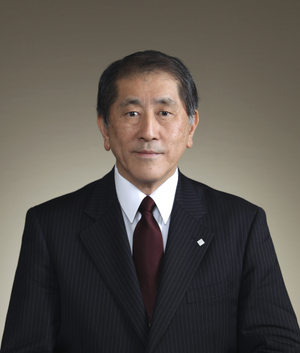
Higher education in post-World War II Japan has expanded dramatically. Private universities have been central to this development. By 2020,Japan had 615 private four-year colleges or universities, accounting for 80 percent of colleges and universities, serving 80 percent of Japan’s student population.
The Japan Association of Private Universities and Colleges (JAPUC) plays a significant role in Japan’s private universities and colleges. JAPUC was established by 24 universities/colleges in 1951 when it declared its statement of purpose: JAPUC should contribute maintaining dignity and freedom of private universities/colleges, to develop higher educational institutions and enhance their quality, and to promote research and cultural activities. JAPUC became an incorporated association in 1958 and transformed itself into a general corporate judicial person in 2012.
As of April 2022, 123 universities or colleges are JAPUC members. While these schools are only about 20 percent of the total number of private universities or colleges in Japan, they account for approximately 50 percent of university and college students, and about 50 percent of financial activities of all private universities or colleges. As a result, JAPUC plays a major role among Japan’s private universities and colleges.
Let us look back at the history of contribution of private universities or colleges in the post-WWII Japan. JAPUC member schools have provided higher education to many of Japan’s youth in the post-WWII era. By doing this, we responded to the urgent needs of rapid diffusion of higher education to the Japan’s postwar population to establish innovative industrial technologies and promote economic growth. Japan’s private universities and colleges also responded to the hopes and wishes of many young Japanese to receive higher education, consistent with the founding philosophies prevailing in the different schools. These contributions have been central to Japan’s growth and prosperity over the past seven decades.
In recent years Japan has lost its traditional focus on catching up to the US in economy as well as in industrial technology. This was partly because Japan surpassed the US in trade balance in many fields such as automobiles, electric appliances, and semiconductors in the mid-1980s. There followed a period of uncertainty about Japan’s economic future. Meanwhile, the world, especially the OECD countries, accelerated their speed in moving toward digitalization, leaving Japan behind. Japan was ranked No. 1 in terms of industrial technology in 1990, but Japan quickly dropped its ranking down to 30th in 2019.
Japan now needs to educate and train university/college graduates who are willing to accept the challenge of grappling emerging problems to which no one knows real answer. The COVID-19 pandemic is a good illustration. We believe that private universities or colleges in Japan should be able to graduate their students who will have the capacities to grapple with today’s and tomorrow’s problems in ways that are consistent with their inherited institutional missions.
It is encouraging that in last two to three decades many of Japanese private universities and colleges have made substantial efforts to enhance the quality of their educational programs. These efforts have born fruit, dramatically enhancing the educational quality of Japanese private universities and colleges as compared with the 1980s.
Today, Japanese private universities and colleges face critical new challenges. Japan’s population is decreasing. The country faces new challenges such as fast DX (digital transformation) and rapid globalization in the post-COVID19 context. Japanese private universities or colleges will have to educate and train their students who are willing and able to tackle these problems as well as the unknown problems of tomorrow. The JAPUC member schools must continue to play their leadership role in higher education reform by instituting the necessary reforms and by demonstrating that they can be successful.
Given those tasks, the Japanese Government financial subsidies to Japanese private universities and colleges is too small. Today, each private university or college in Japan receives less than 10 percent of its budget from the government. It is well known that Japan is raked the lowest among the OCED countries in terms the government’s financial contribution to higher education. Furthermore, when we compare Japanese private universities/colleges with national universities, the amount of national subsidy per student at an average national university is about 13.5 times as large as that per student at an average private university. It is vitally important to close this gap between national universities and private universities/colleges. We strongly urge the Japanese government to increase the national subsidies to private universities and colleges up to the same level of subsidies to national universities. Otherwise, Japan will continue lagging behind among the advanced industrial nations in terms of educating competitive young people who can handle DX, globalization, and tomorrow’s unknown challenges.
JAPUC has a responsibility to play a significant role in leading Japanese private universities and colleges. JAPUC is determined to take the lead in rising to the educational challenges posed by new problems. We appreciate advice from our member schools in this cooperative effort. Thank you.
Aiji Tanaka
President,
Japan Association of Private Universities and Colleges
TOP
